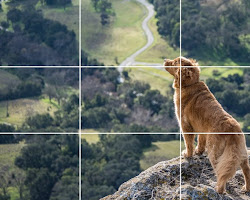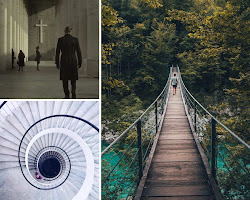Table of Contents
Introduction
Taking great photos is a skill that can be learned by anyone, with a little practice and some basic knowledge of photography. In this article, I will share some tips on how to take better photos, even if you’re just starting out. I will cover topics such as composition, lighting, and camera settings. I will also provide some resources for further learning.
Composition
Composition is the arrangement of elements in a photo. It is one of the most important factors in determining the success of a photo. A well-composed photo will be visually appealing and will draw the viewer’s eye to the subject.
There are many different composition techniques that you can use to improve your photos. Here are a few of the most popular:
- The rule of thirds: This is a simple but effective composition technique. To use the rule of thirds, imagine dividing your photo into three equal horizontal and vertical sections. The important elements of your photo should be placed along the lines or at the intersections of the lines.

- Leading lines: Leading lines are lines that lead the viewer’s eye to the subject of the photo. They can be natural lines, such as a river or a road, or they can be man-made lines, such as a fence or a building.

- Symmetry: Symmetry is a composition technique that creates a balanced and pleasing photo. When using symmetry, the elements of the photo should be evenly spaced on either side of the center of the photo.
- The golden ratio: The golden ratio is a mathematical ratio that is often found in nature and in art. It is said to create a pleasing and aesthetically pleasing composition.
Lighting
Lighting is another important factor in taking great photos. The right lighting can make your subject stand out and create a more dramatic effect.
There are two main types of lighting: natural and artificial. Natural light is the best type of light for photography, but it can be difficult to control. Artificial light, such as flash or studio lights, can be used to create specific effects, but it can also be harsh and unflattering.
If you’re shooting in natural light, try to find a location with soft, diffused light. This type of light will create a more flattering effect on your subject. Avoid shooting in direct sunlight, as this can create harsh shadows and make your subject squint.
If you’re shooting with artificial light, use a diffuser to soften the light. You can also use a reflector to bounce light back onto your subject.
Camera Settings
The settings on your camera can also affect the quality of your photos. There are a number of different settings that you can adjust, but some of the most important ones include aperture, shutter speed, and ISO.
- Aperture: Aperture controls the amount of light that enters the camera. A wide aperture will let in more light, while a narrow aperture will let in less light. A wide aperture is good for shooting in low light, while a narrow aperture is good for creating a shallow depth of field.
- Shutter speed: Shutter speed controls how long the shutter is open. A fast shutter speed will freeze motion, while a slow shutter speed will blur motion. A fast shutter speed is good for shooting sports or action, while a slow shutter speed is good for creating a sense of movement or atmosphere.
- ISO: ISO controls the sensitivity of the camera’s sensor to light. A high ISO will make the photo brighter, but it will also increase noise. A low ISO will make the photo darker, but it will reduce noise.
Practice
The best way to learn how to take better photos is to practice. The more you take photos, the better you’ll get at it. Experiment with different settings and techniques to see what works best for you. And don’t be afraid to ask for help from more experienced photographers.
Useful Links And Resources
There are a number of resources available to help you learn more about photography. Here are a few of my favorites:
- The Photographer’s Eye by Michael Freeman: This book is a great introduction to the basics of photography.
- Light: Science and Magic by Fil Hunter: This book is a comprehensive guide to lighting in photography.
- The Art of Photography by Bruce Barnbaum: This book is a more advanced book on photography.
- Photogpedia is a comprehensive online resource for photography terms and concepts.
- Digital Photography School:
- Website: Digital Photography School
- Description: This website offers a wide range of photography tutorials, tips, and resources for photographers of all levels. Explore articles on composition, lighting, camera settings, and more.
- Photography Life:
- Website: Photography Life
- Description: Photography Life provides in-depth articles, reviews, and tutorials on various photography techniques. Learn about camera gear, post-processing, and improving your photography skills.
- B&H Explora:
- Website: B&H Explora – Photography
- Description: B&H Explora offers photography-related articles, guides, and product reviews. Explore tips for different genres of photography and techniques for enhancing your skills.
- YouTube Photography Channels:
- Channels: Peter McKinnon, Mango Street, Tony & Chelsea Northrup
- Description: These YouTube channels offer a variety of photography tutorials, camera gear reviews, and creative tips to help you improve your photography skills.
- Adobe Lightroom Tutorials:
- Website: Adobe Lightroom Tutorials
- Description: If you’re interested in post-processing your photos, Adobe Lightroom tutorials provide guidance on editing, enhancing, and retouching your images.
- Photography Composition Guides:
- Website: Photography Composition Guides
- Description: Learn about essential photography composition techniques, including the rule of thirds, leading lines, symmetry, and more.
I hope this article has been helpful. With a little practice and some basic knowledge, you can start taking better photos today.
Looking for more? Check out my other articles here: DIY Hobbies
Hi there to all, how is the whole thing, I
think every one is getting more from this website, and your views
are nice in support of new visitors.
Comments are closed.